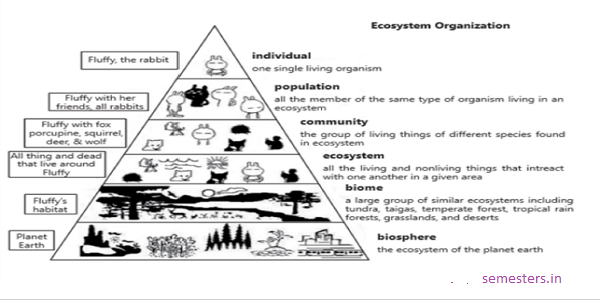An Introduction to Concepts and terms of Ecology and Environment
Ecology is the study of interactions between organisms, organisms and the surroundings. On the other hand environment is the natural component in which biotic (living) and abiotic (non-living) factors interact among themselves and with each other. In this chapter you will be introduced to important concepts and terms of Ecology and Environment for a better understanding.
- Environment is the natural component in which biotic (living) and abiotic (non-living) factors interact among themselves and with each other. These interactions shape the habitat and ecosystem of an organism.
- Ecology encompasses the study of individual, organisms,population, community, ecosystem, biome and biosphere. They together form the various levels of ecological organization.

Important Concepts and terms
Population
• Population is a community of interbreeding organisms (same species), occupying a defined area during a specific time.
• Population growth rate can be positive due to birth and/or immigration or negative due to death and/or emigration.
Community
The dominant plant form define the type of community. For example, a grassland community is dominated by grasses
Ecosystem
• An ecosystem is a community of living organisms in conjunction with the nonliving components of their environment. These components interact as a system.
Biome
A biome is a large naturally occurring community of flora and fauna occupying a major habitat. For instance Rain forest biome or tundra biome.
Biosphere
• The biosphere includes all living organisms on earth. Together with the dead organic matter produced by them. Thus the biosphere includes all living organisms on earth. Which, with the dead organic matter produced by them.
Habitat
• Habitat is the physical environment in which an organism lives (address of an organism).
•Many habitats make up the environment.
